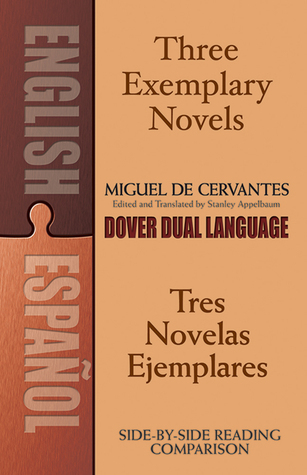
From the creator of Don Quixote, the most famous figure in Spanish literature, comes this trio of popular "La gitanilla," a gypsy romance; "El coloquio de los perros," a lively dialogue between two dogs; and "Rinconete y Cortadillo," a day in the underworld of eighteenth-century Seville. Written in the baroque language of Cervantes' era, these works are not easily read in the original Spanish. This new English translation presents as complete and literal an interpretation as possible. The dual-language format offers students and teachers an excellent tool for reading and comprehending the obsolete and semantically altered terms of the past. It also fosters a fresh appreciation of the author's story construction and wordplay. Editor Stanley Appelbaum guides the reader with an informative Introduction and helpful notes throughout the text.
Author

Miguel de Cervantes y Cortinas, later Saavedra was a Spanish novelist, poet, and playwright. His novel Don Quixote is often considered his magnum opus, as well as the first modern novel. It is assumed that Miguel de Cervantes was born in Alcalá de Henares. His father was Rodrigo de Cervantes, a surgeon of cordoban descent. Little is known of his mother Leonor de Cortinas, except that she was a native of Arganda del Rey. In 1569, Cervantes moved to Italy, where he served as a valet to Giulio Acquaviva, a wealthy priest who was elevated to cardinal the next year. By then, Cervantes had enlisted as a soldier in a Spanish Navy infantry regiment and continued his military life until 1575, when he was captured by Algerian corsairs. He was then released on ransom from his captors by his parents and the Trinitarians, a Catholic religious order. He subsequently returned to his family in Madrid. In Esquivias (Province of Toledo), on 12 December 1584, he married the much younger Catalina de Salazar y Palacios (Toledo, Esquivias –, 31 October 1626), daughter of Fernando de Salazar y Vozmediano and Catalina de Palacios. Her uncle Alonso de Quesada y Salazar is said to have inspired the character of Don Quixote. During the next 20 years Cervantes led a nomadic existence, working as a purchasing agent for the Spanish Armada and as a tax collector. He suffered a bankruptcy and was imprisoned at least twice (1597 and 1602) for irregularities in his accounts. Between 1596 and 1600, he lived primarily in Seville. In 1606, Cervantes settled in Madrid, where he remained for the rest of his life. Cervantes died in Madrid on April 23, 1616. -Copied from Wikipedia